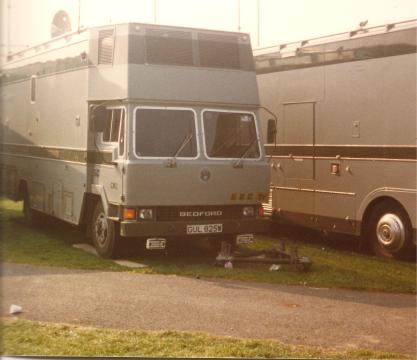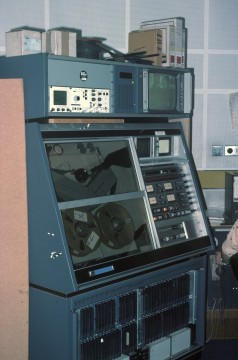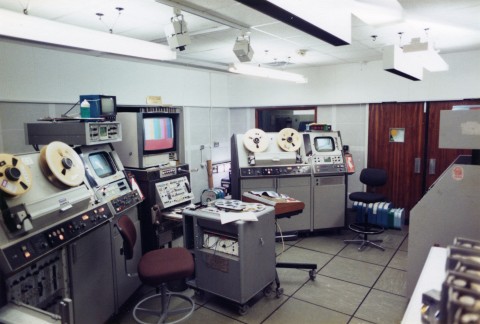VTB ‘Channel Record’ 1988 from pebblemill on Vimeo.
Copyright resides with the original holder, no reproduction without permission.
The video is a bit of moving history, although it was shot mute for a music sequence. It shows VTB in 1988 doing a drama “channel record” from Studio A on a pair of 1” VPR2 machines. The programme is “Final Run” VTB1 is on the left, manned by series editor Steve Neilson, VTB2 is on the right manned by yours truly. Video drama on location was very much pioneered by Pebble Mill (“Blackstuff”) and it was practice that the recording engineer or editor would record both the studio and the location. The bottle of Bush Mills Whiskey suggests the studio was after our location shoot in Northern Ireland . The “main” recording would be on VTB1 and the “backing” on VTB2. This was a throw back to the days when VT recording was not that reliable and all studio recordings had a back-up in case of problems. The blank tapes were assemble edited from the studio allowing time code to be “time of tape” rather than “time of day “as was used in London. In the case of a drama series we used “multi-episodic” tapes which meant that we would change tapes to that of whichever episode was being recorded. So for a four episode series we would have four master and backing tapes being used at any one time. This saved a lot of time at the edit not having to change tapes, and relieved some of the inevitable boredom of awaiting rehearsals to turn into “takes”. The tape trolley had a four channel audio mixer in it for editing purposes, and if you wanted to add music at all during the edit, you had to order you vinyl disc from the library and have it transferred to ¼” tape in the transfer suite.
Colin Fearnley



